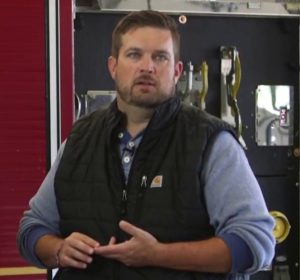9 Relating to sources
It's all about building relationships
“Don’t write about man. Write about a man.”
E.B. White

If Lucas Sullivan had to bet on which question he will be asked when he speaks to young journalists, he would win money every time with the answer, “How do I get sources?”
The answer is both simple and time-consuming.
“Sourcing just comes down to putting in the work,” he said. “It involves you really showing up and meeting face to face. You have to show them that you are a human being. If you are nervous that is OK; you just need to relax and find a way to relate to them and know a little bit about them before you go into the interview. Show them that you have invested some time and show that you care.”
Sullivan points out that news sourcing and feature sourcing are often two different things. At the core, both involve conversations and relating with people on a “human being basis,” but features require a far more nuanced touch than the surgical strike of a news story.
“It is about relating,” he said. “It is like picking up that significant other on that first date and trying to relate, and have a flowing discussion and not be awkward. You really need to work on honing those skills if you want to be a good source builder. It can’t be done from your desk.”
Sullivan said that when he is assigned a feature, the first thing he does is take a legal pad and write down everyone he might want to talk to. He then goes through that list and makes calls.
“If I talk to someone and he suggests someone else, I’ll add that to the list,” he said. “That’s where it all starts. Go through all of this and do levels of reporting.
“When I finally sit down to write, it shouldn’t be that difficult. The key is plotting it all out. If you’ve done all the reporting, you should be able to do the writing.”
Sullivan advocates the technique of keeping the notebook closed and the recorder off and just talking first to build a rapport. On a daily story that could be five minutes; on a longer feature it could be the first full meeting.”
Sullivan said he has done stories where he wants to spend six months as part of a source’s life, and in their first meeting, he might not open his notebook at all.
“That gets you out of the mindset of I have to gather these facts to build this story that I already have an idea of how this is going to go,” he said. “It also keeps you open to where this conversation might take you and builds their comfort level so that when you open up your notebook for the first time they are not feeling as on the spot and they have some sort of comfort with you.”
Listen more than you talk and that can be hard for any reporter, Sullivan admitted. When writers are just starting out, there can be an inclination to decide what the feature is before the interview even starts. That, however, usually ends up in a less-than-fruitful conversation between people because the writer is not there to find out what the story is about.
“Not having a list of 15 questions when you show up may allow you to let the conversation go the way the conversation goes,” Sullivan said. “Ask follow-up questions, make it a point not to look at the list of 10 questions that you have. Most of the best quotes that I ever got in 20 years of being a newspaper reporter were after I had closed my notebook and we kept talking. The person would just say something that blew my mind and then I would open my notebook back up and the conversation would go a different way.”
Sullivan is also a big proponent of letting silence be your best interview companion.
“It is uncomfortable for people to just sit there and be quiet for a minute,” he said. “Those pregnant pauses are doors for them to be open. Sometimes those moments are when somebody will say, ‘You know what else…” because they had a moment to breathe and think.
“They can feel pressured by your question sometimes and just say [the first thing] they think of or the thing they think you want to hear. Sometimes if you let there be some space after that initial question they will say the thing that has the most meaning to them.”
